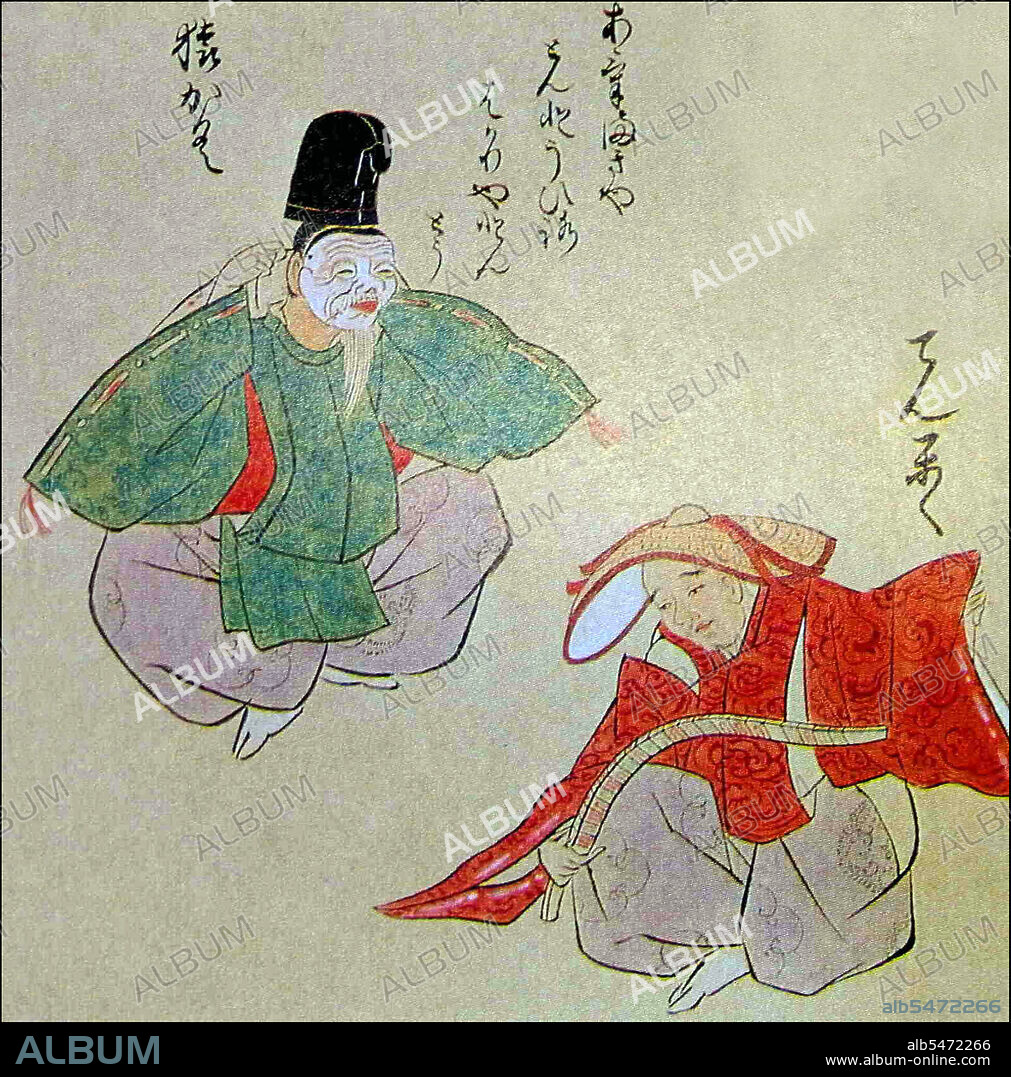alb5472266
Japan: Sarugaku (left) and Dengaku (right) performers. Watercolour, c.18th century.

|
Zu einem anderen Lightbox hinzufügen |
|
Zu einem anderen Lightbox hinzufügen |



Haben Sie bereits ein Konto? Anmelden
Sie haben kein Konto? Registrieren
Dieses Bild kaufen
Titel:
Japan: Sarugaku (left) and Dengaku (right) performers. Watercolour, c.18th century.
Untertitel:
Siehe automatische Übersetzung
Sarugaku, literally 'monkey music', was a form of theatre popular in Japan during the 11th to 14th centuries. It originated from 'sangaku', a form of entertainment reminiscent of the modern-day circus, consisting mostly of acrobatics, juggling, and pantomime, sometimes combined with drum dancing. It came from China to Japan in the 8th century and there mingled with indigenous traditions, particularly the harvest celebrations of Dengaku. Dengaku were rustic Japanese celebrations that can be classified into two types: those that developed as a musical accompaniment to rice planting observances and the Dengaku dances that developed in conjunction with Sangaku. The Dengaku celebrated for rice planting were performed by villagers either at the new year or during the planting season in early summer. It was only in the 14th century that these dances were brought to the cities and incorporated into Noh theatre. Dengaku was closely linked with the native Japanise religion of Shinto. Ritualistic elements of this were incorporated with Sarugaku to form Noh.
Bildnachweis:
Album / Pictures From History/Universal Images Group
Freigaben (Releases):
Model: Nein - Eigentum: Nein
Rechtefragen?
Rechtefragen?
Bildgröße:
4215 x 4268 px | 51.5 MB
Druckgröße:
35.7 x 36.1 cm | 14.1 x 14.2 in (300 dpi)
Schlüsselwörter:
ASIEN • ASIEN, KONTINENT • DRAMA • GEMAELDE • GESCHICHTE • JAPAN • JAPANER • JAPANERIN • JAPANISCH • KONTINENT, ASIEN • KULT, SHINTO • KUNST • MALEREI • ORMNAMENT: JAPANISCH • RELIGION • SHINTÔ • SHINTOISMUS • TANZ • TANZEN • TECHNIK: AQUARELL • TÄNZER • TÄNZERIN • ZEITGESCHICHTE
 Pinterest
Pinterest Twitter
Twitter Facebook
Facebook Link kopieren
Link kopieren Email
Email
